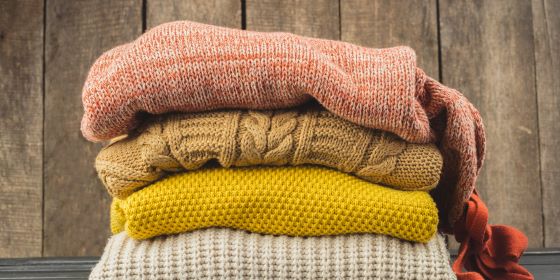Key Takeaways:
- Exploring the fascinating evolution of sweaters from practical wear to fashion statements.
- Understanding the importance of sustainable practices in producing sweaters and how they affect our planet.
- Learning how to select and style sweaters to flatter different body types and suit various occasions.
- Getting insight into the cultural impact of sweaters and their care to ensure longevity.
- Looking at technological advances in sweaters and their ethical implications in fashion.
Table of Contents:
- The Rich History of Sweaters in Apparel
- Sweater Materials and Sustainability Efforts
- Guide to Sweater Styles and Fits
- The Art of Dressing Up a Sweater
- The Importance of Proper Sweater Care
- The Future of Sweater Design and Technology
- Pairing Sweaters with Different Outfits
- Making a Statement with Ethical Sweater Choices
The Rich History of Sweaters in Apparel
Sweaters have journeyed from being a fisherman’s staple to standing at the forefront of fashion trends. Knits of yore were crafted to provide seafarers with a barrier against nature’s unforgiving elements, prioritizing function over aesthetics. As society evolved and industrialization ushered in new textile innovations, so did the humble sweater. During the romantic era, sweaters began to take a turn from their strict utilitarian roots, embracing designs that allowed for individual expression and style. By the twentieth century, sweaters became a canvas for creativity, reflecting changes in art, music, and society. Their functionality was no longer the sole focus; comfort and style emerged as core values in sweater design.
In the 1920s, women embraced sweaters, seeking clothing that matched their newfound freedoms – easy to wear but stylish and modern. By the mid-century, popular films and icons popularized the preppy sweater look, propelling it into the mainstream as a symbol of collegiate chic. Today, vintage sweater finds from past decades spark joy among enthusiasts and thrifty millennials alike, signifying that sweaters have come full circle from their practical origins to becoming valued treasures of sartorial history.
Sweater Materials and Sustainability Efforts
Sweater production has traditionally relied on various materials, each offering different textures and qualities. Wool, for instance, is prized for its warmth and durability, while cashmere is celebrated for its softness and luxurious feel. However, with a mounting awareness of the textile industry’s impact on the environment, consumers and manufacturers alike are becoming more conscientious about the lifecycle of their products. An imperative shift towards sustainable practices can be observed, characterized by using organic fibers, lower-impact dyes, and recycled materials.
Mindful choices, such as supporting brands prioritizing sustainability, reflect a commitment to environmental stewardship. Those looking to update their sweater collection with this ethos in mind have options such as womens pullovers crafted with consideration for the planet. These garments offer style and substance, allowing fashion to harmonize with ethical consumption.
Guide to Sweater Styles and Fits
The world of sweaters is replete with diverse silhouettes, from the cozy oversized cardigans to the sleek fitted turtlenecks. Each style serves a purpose in fashion, whether to accentuate certain features or offer an enveloping sense of comfort. For instance, a cable knit sweater is often synonymous with timeless winter wear, while a light crewneck can serve as a transitional piece between seasons. Recognizing the right fit for one’s body type is crucial; not every sweater flatters every figure similarly. A petite frame might be overwhelmed by a chunky knit, whereas an athletic build could feel restricted in a slim-fit pullover.
Layering is an essential technique in sweater styling, as it allows for adjustment to varying temperatures and settings. A fine merino wool sweater can act as a sleek base beneath a blazer, maintaining professionalism while keeping the chill at bay. Conversely, an airy wrap cardigan can be thrown over a summer dress for a delicate yet functional touch of warmth on a fantastic evening. The adaptability of sweaters, paired with reasonable choices in material and fit, opens up many styling possibilities for every season.
The Art of Dressing Up a Sweater
Conventionally, sweaters may have been relegated to casual wear, but modern fashion has transcended such limits. A luxurious v-neck cashmere sweater can be the cornerstone of an elegant ensemble, especially when paired with a pencil skirt or finely tailored pants. Accessories play a pivotal role in this transformation – a statement necklace or chandelier earrings can instantly elevate a simple knit. Textural interplay is another avenue to explore; a ribbed sweater offers a tactile contrast when worn with a satin maxi skirt, resulting in a wide variety and sophisticated composition. The key lies in selecting pieces that complement each other, creating a harmonious yet striking look that defies expectations and breathes new life into the concept of sweater dressing.
The Importance of Proper Sweater Care
Caring for sweaters appropriately is a ritual as comforting as wearing them. High-quality sweaters are an investment; hence, knowing the best practices for their upkeep is indispensable. Each material demands a different approach: wool sweaters benefit from being aired out, while cashmere requires gentle hand-washing and pilling removal to retain its plush quality. Missteps like excessive heat or rough agitation can irreparably alter a sweater’s shape and texture, hence why most care labels suggest lay-flat drying methods and advise against using traditional hangers. These small yet significant steps in care can extend the life of your sweaters, ensuring that they remain perennial favorites in your wardrobe.
The Future of Sweater Design and Technology
Innovation in the sweater industry is knitting together the past and the future. As textile technologies evolve, so does the potential for genuinely customized and inventive knitwear. 3D knitting machines, for instance, are revolutionizing the manufacturing process, enabling seamless construction and reducing waste. Designers are experimenting with smart textiles that can adapt to environmental changes, leading to functional, fashionable, and futuristic sweaters. As we stand on the cusp of these advancements, the traditional art of sweater making is poised to leap into new frontiers, challenging conventions and embracing a new narrative of technological craftsmanship.
Pairing Sweaters with Different Outfits
The flexibility and varied designs of sweaters make them simple to pair with almost any outfit. The key to a flawless sweater ensemble lies in balance and proportion. For a daytime look, a cropped cardigan might convey laid-back charm when teamed with high-waisted trousers, while an oversized turtleneck can serve as a statement piece against the streamlined silhouette of leggings or skinny jeans. Mixing lengths, fits, and textures invite creativity, allowing personal style shine. A basic sweater can be transformed with a chic belt or a tailored coat, underscoring the chameleon-like qualities.
Making a Statement with Ethical Sweater Choices
In the current climate of fashion, transparency and ethics take center stage. A well-chosen sweater goes beyond aesthetics; it reflects personal ethics and global awareness. This conscious shift has given rise to labels that value artisanal skill and sustainable sourcing, offering consumers a choice that feels good in every sense. By purchasing ethically made sweaters, individuals contribute to the well-being of the artisans who create them and the environment that sustains us. The slow fashion movement, characterized by a thoughtful consumption approach, has transformed how we view our wardrobe staples, with sweaters prominently as cherished elements of a mindful and modern closet.




